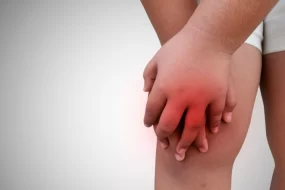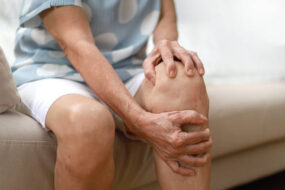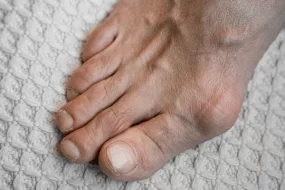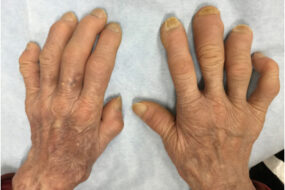- Home
- INTERNAL MEDICINE
- Drug-Induced Liver Injury

Drug-Induced Liver Injury (DILI) is a significant cause of liver damage and can lead to acute liver failure or chronic liver disease. DILI occurs when medications or other substances cause an adverse reaction in the liver, resulting in inflammation, cell death, and impaired liver function. Understanding its etiology, pathophysiology, clinical presentation, diagnosis, and management is crucial for healthcare providers.
Etiology
DILI can be classified into two main categories:
- Intrinsic (Predictable) DILI:
- Occurs due to direct hepatotoxicity of a drug, usually dose-dependent and predictable.
- Common culprits include:
- Acetaminophen: Overdose is the leading cause of acute liver failure in the U.S.
- Nonsteroidal Anti-Inflammatory Drugs (NSAIDs): Such as ibuprofen and naproxen.
- Antibiotics: Including isoniazid, amoxicillin-clavulanate, and chlorpromazine.
- Antiepileptics: Such as phenytoin and valproate.
- Herbal Supplements: Certain herbal remedies can cause intrinsic liver injury.
- Idiosyncratic (Unpredictable) DILI:
- Occurs in a small percentage of individuals regardless of dose and is not dose-dependent. Mechanisms are often immune-mediated.
- Common medications include:
- Antibiotics: Sulfonamides and nitrofurantoin.
- Anticonvulsants: Lamotrigine and carbamazepine.
- Antituberculosis Drugs: Such as rifampicin and pyrazinamide.
- Psychotropic Medications: Including trazodone and fluoxetine.
- Genetic predispositions may play a role in idiosyncratic reactions.
Pathophysiology
The mechanisms of DILI can be complex and multifactorial, including:
- Direct Hepatotoxicity:
- Some drugs cause direct damage to hepatocytes, leading to cell death and liver inflammation.
- Metabolite Formation:
- Drugs may be converted into reactive metabolites that can bind to cellular proteins, causing cellular injury.
- For example, acetaminophen is metabolized into a toxic intermediate (NAPQI) that depletes glutathione, leading to hepatocyte damage.
- Immune-Mediated Injury:
- Some drugs can trigger an immune response against hepatocytes, leading to inflammation and liver damage.
- This can occur through mechanisms such as hapten formation, where drug metabolites modify proteins, resulting in the formation of neoantigens.
- Cholestasis:
- Certain medications can disrupt bile flow, leading to bile acid accumulation and cholestatic injury.
Clinical Presentation
- Symptoms:
- Fatigue: One of the most common early symptoms.
- Nausea and Vomiting: Often accompanied by decreased appetite.
- Abdominal Pain: Particularly in the right upper quadrant.
- Jaundice: Yellowing of the skin and eyes due to elevated bilirubin levels.
- Pruritus: Itching due to bile salt accumulation.
- Signs:
- Hepatomegaly: Enlarged liver may be palpated on physical examination.
- Ascites: Fluid accumulation in the abdominal cavity in advanced liver injury.
- Coagulopathy: Increased bleeding tendency due to impaired liver function.
- Encephalopathy: Altered mental status in severe cases.
Diagnosis
- Medical History:
- A thorough history is essential to identify potential drug exposures, including over-the-counter medications, herbal supplements, and any recent changes in medication.
- Laboratory Tests:
- Liver Function Tests (LFTs): Assess levels of alanine aminotransferase (ALT), aspartate aminotransferase (AST), alkaline phosphatase (ALP), and bilirubin.
- Complete Blood Count (CBC): To check for anemia or thrombocytopenia.
- Coagulation Profile: Prothrombin time (PT) and international normalized ratio (INR) to assess liver function.
- Autoimmune Tests: If autoimmune liver disease is suspected (e.g., ANA, ASMA).
- Imaging Studies:
- Ultrasound: Can help assess for hepatomegaly, biliary obstruction, or fatty liver.
- CT or MRI: May be indicated in complex cases or when other complications are suspected.
- Liver Biopsy:
- In certain cases where the diagnosis is uncertain, a liver biopsy may be performed to evaluate for histological changes related to DILI.
- DILI Scale:
- Various scales (e.g., Roussel Uclaf Causality Assessment Method – RUCAM) can help assess the likelihood of DILI based on clinical and laboratory findings.
Management
- Discontinuation of the Offending Agent:
- The first and most crucial step is to stop the medication or substance suspected of causing liver injury.
- Supportive Care:
- Monitor liver function and provide symptomatic relief.
- Ensure hydration and nutritional support as needed.
- Specific Treatments:
- Acetaminophen Overdose: N-acetylcysteine (NAC) is an antidote that can prevent or mitigate liver damage if administered early.
- Corticosteroids: May be indicated in severe immune-mediated liver injury (idiosyncratic DILI) to reduce inflammation.
- Liver Transplantation: May be necessary in cases of acute liver failure or severe chronic liver disease.
- Follow-Up and Monitoring:
- Regular monitoring of liver function tests is essential to assess recovery.
- In some cases, referral to a hepatologist may be required for specialized care.
Prognosis
- The prognosis for DILI varies widely depending on the causative agent, the severity of liver injury, and the timeliness of intervention.
- Most patients recover fully with appropriate management, especially if the offending agent is discontinued promptly.
- However, severe cases can lead to chronic liver disease, cirrhosis, or liver failure.
Conclusion
Drug-Induced Liver Injury is a significant clinical concern that requires prompt recognition and management. Understanding the various etiologies, clinical presentations, and management strategies is essential for healthcare providers to prevent complications and ensure optimal patient outcomes. Awareness of potential drug interactions and monitoring liver function in at-risk populations can help mitigate the risk of DILI. Regular follow-up and patient education are also crucial in managing this condition effectively.












